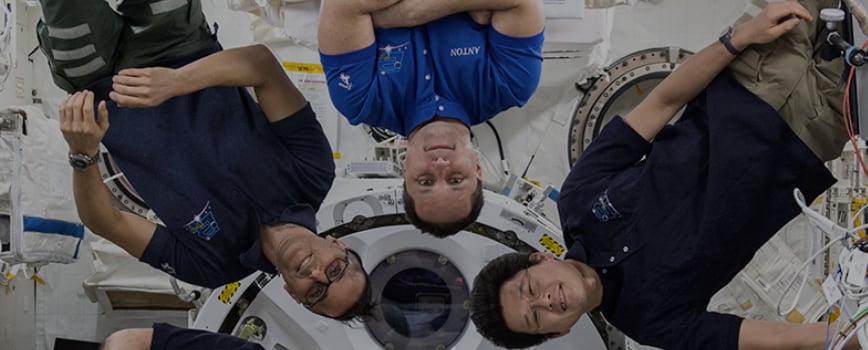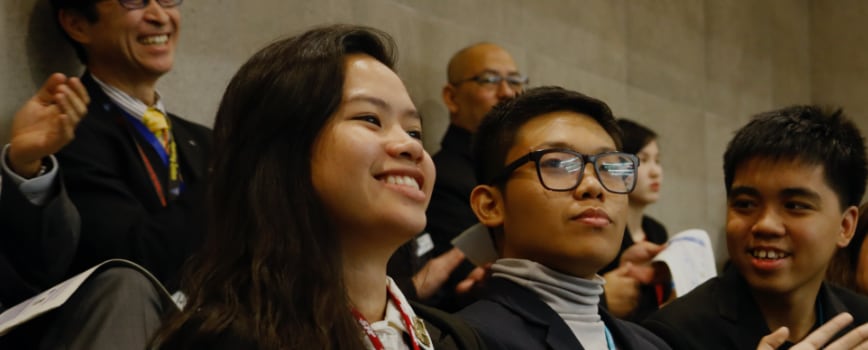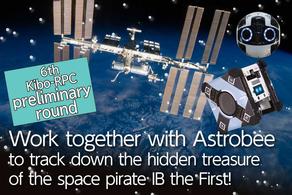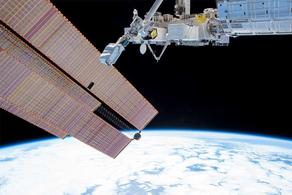2022.12.28
- Announcements
- Events
The 3rd Kibo Robot Programming Challenge : Final Round Results
- Experiment at Kibo
- Kibo Utilization Office for Asia (KUOA)
Summary
On Saturday, October 29th, 2022, the Japan Aerospace Exploration Agency (JAXA) and National Aeronautics and Space Administration (NASA)'s joint project, the 3rd Kibo Robot Programming Challenge (Kibo RPC), held an online Final Round event. Teams of students from around the world remotely joined to witness Astrobee - a NASA drone robot installed with their own programs - fly inside the Japanese experiment module 'Kibo', delivering astronaut WAKATA Koichi their voice message marking mission completion. This event was organized using the final on-orbit footage pre-recorded.
The video of this event is available on the following JAXA channel. Please visit the JAXA event streaming channel: https://youtu.be/NjOgNrPMUJsYOUTUBE
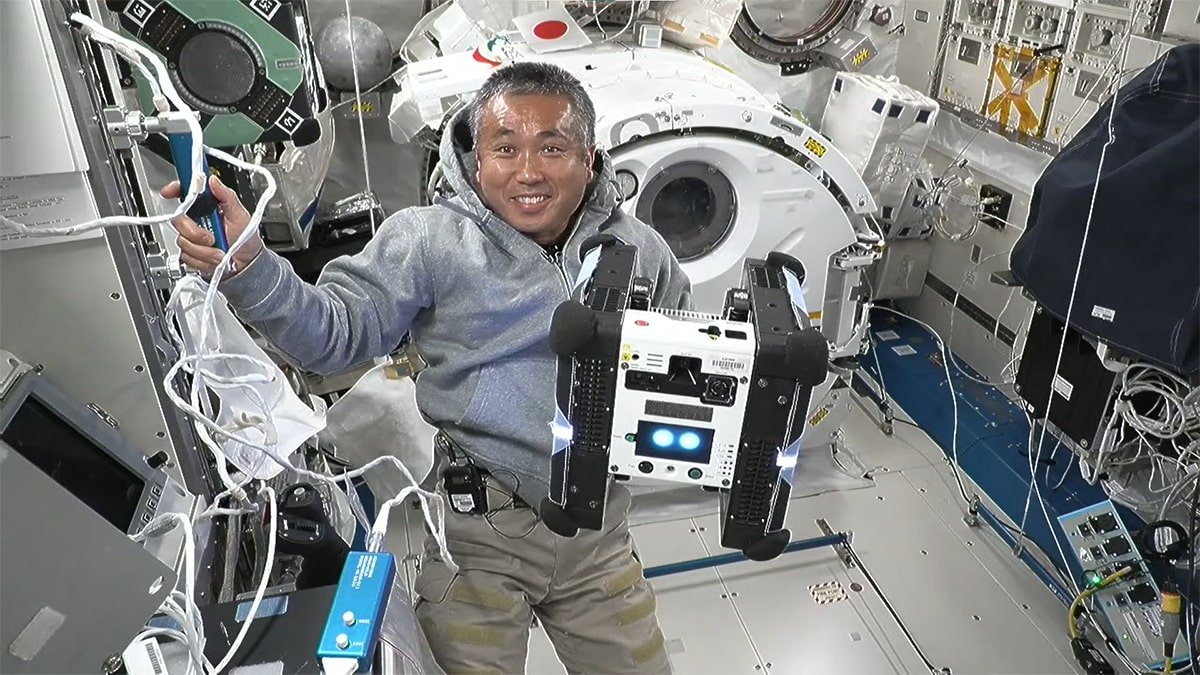
(Image by NASA/JAXA)
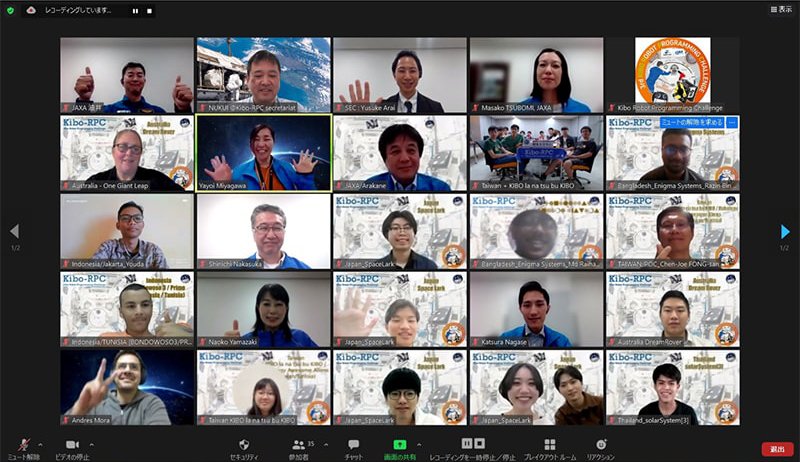
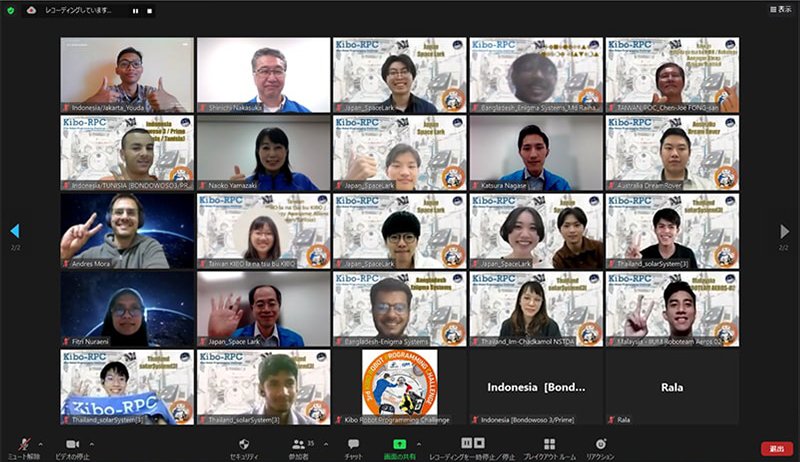
The teams from each participating country/region competed in the Preliminary Round as a regional competition in late June through early July 2022. The representative of each country/region from the Preliminary Round winners prepared with refined programs for the on-orbit finals. Ten teams were represented, including the Worldwide Team (WWT), and all competed for speed and accuracy. (Table 1)
A new WWT system was introduced at the 3rd Kibo-RPC to encourage students from countries not participating in the Kibo-RPC to join in the competition. As a result, for the first time, the joint Indonesian-Tunisian team "Bondowoso 2 / Pinnacle" qualified for the final as a WWT delegate.
Table 1. Final Round Participating Team List (in ABC order)
| Country/Region | Team Name |
| Australia | Dream Rover |
| Bangladesh | Enigma Systems |
| Indonesia | Bondowoso 3 / Prime |
| Japan | Space Lark |
| Malaysia | IIUM ROBOTEAM AEROS-02 |
| Taiwan | KIBO la na tsu bu KIBO / Robology Awesome Aliens |
| Thailand | solarSystem[3] |
| United States of America | CP-HSTAR |
| Vietnam | BDMT |
| Worldwide team | Bondowoso 2 / Pinnacle |
The Competition
At the beginning of the event remarks were made by the commentators, Professor NAKASUKA Shinichi of the University of Tokyo and Astronaut YUI Kimiya. Astronaut YAMAZAKI Naoko then gave an overview, MC of the event, followed by a video message from Jose V Benavides (Astrobee Project Manager) of NASA's Ames Research Center (ARC). JAXA's Engineer NAGASE Katsura explained the game rules, and Astronaut WAKATA Koichi introduced the inside of the ISS Kibo, the venue for the competition. Then, the competition for the on-orbit final round kicked off. (Figure 3)

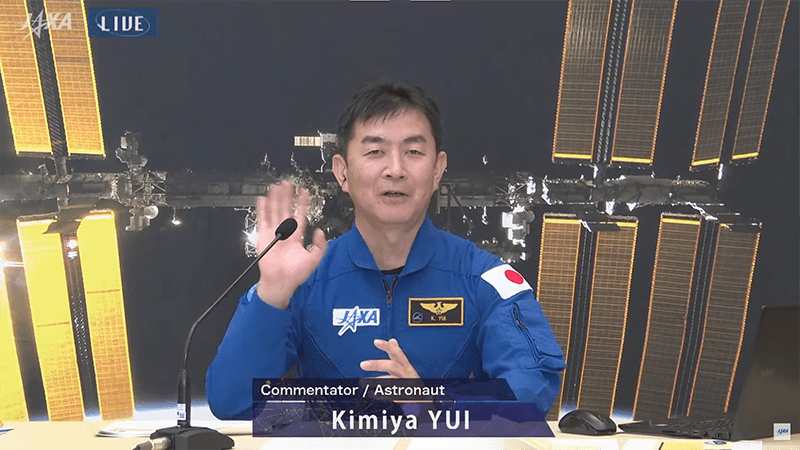
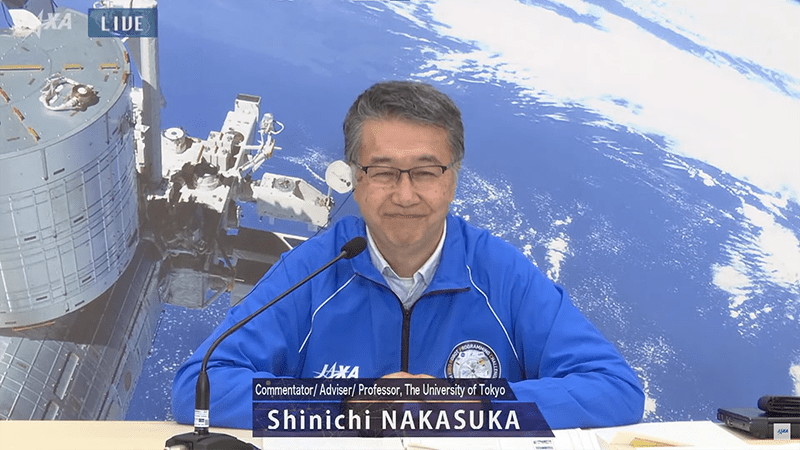

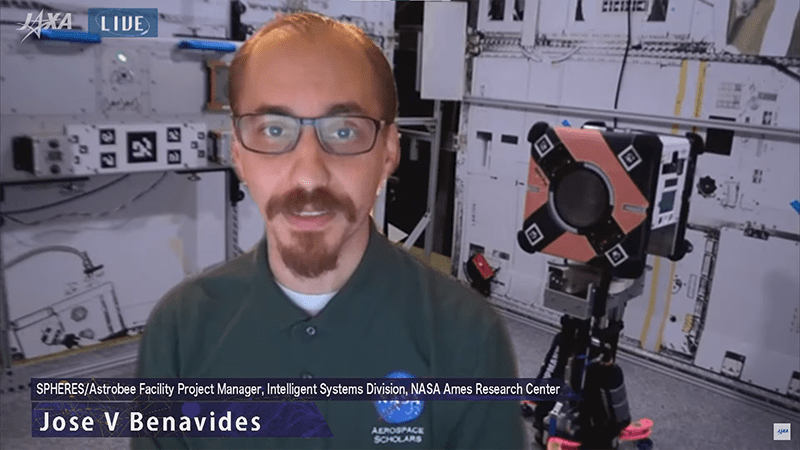
Figure 3: Scenes from the Competition
Most teams could fly Astrobee to the goal and report mission completion to Astronaut WAKATA. Although some teams could not complete all the tasks in the preliminary rounds, the final teams all demonstrated a high level of programming performance. Each team improved during the revision period leading to the final round of competition.
Highlights of the Competition
The choice of flight path characterized each team's strategy. Many teams tried to shorten the flying time, whether they passed above or below the Keep Out Zone (KOZ) in their flight path or took a course just close enough to avoid hitting the KOZ on the way to the goal. This Kibo-RPC scoring system prioritized laser beam accuracy over flight completion time. As a result, all teams spent more time programming laser irradiation and recognizing images when the laser hit the targets. The team of students achieved higher scoring success with a strategy that perfectly combined flight time and accuracy from the laser beam. The group had high hopes for Astrobee. They made their team introduction and then watched intently inside Kibo as their programming efforts were full of hope mixed with worry. (Figure 4).
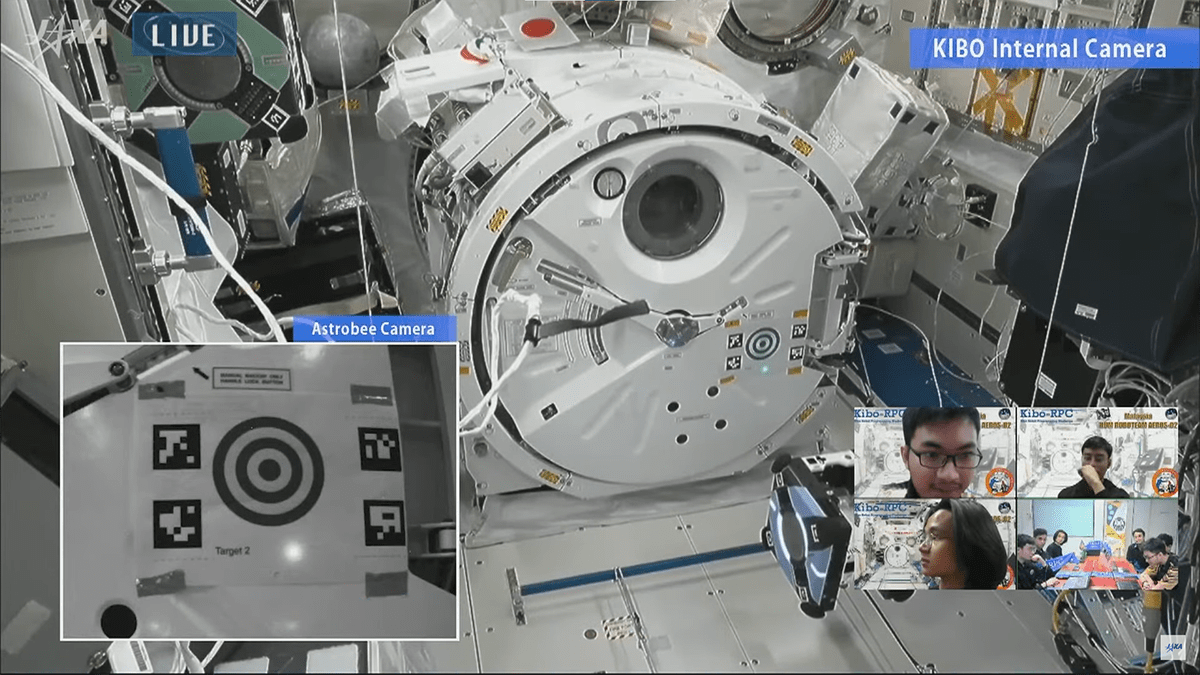
Crew Award
After all teams had completed their performances, Astronaut WAKATA announced the "Crew Award" as a special prize. The Crew Award honors the team that delivered the most impressive message in the audio report of mission completion, the mission's final task, as WAKATA selected. The Bangladesh team "Enigma Systems" received the Crew Award. WAKATA stated, "I was impressed by the message of 'aiming for human development.’ I believe that astronauts from various countries live together on the ISS, and international cooperation is the key to expanding space development and the frontiers of humankind. I hope that you will never forget this feeling and will continue to work hard on future missions." The team leader of Enigma Systems, who received the award, expressed his excitement and said, "I am very honored to receive the Crew Award again this year. The whole team worked very hard and I am very happy for them. Thank you." (Figure 5)
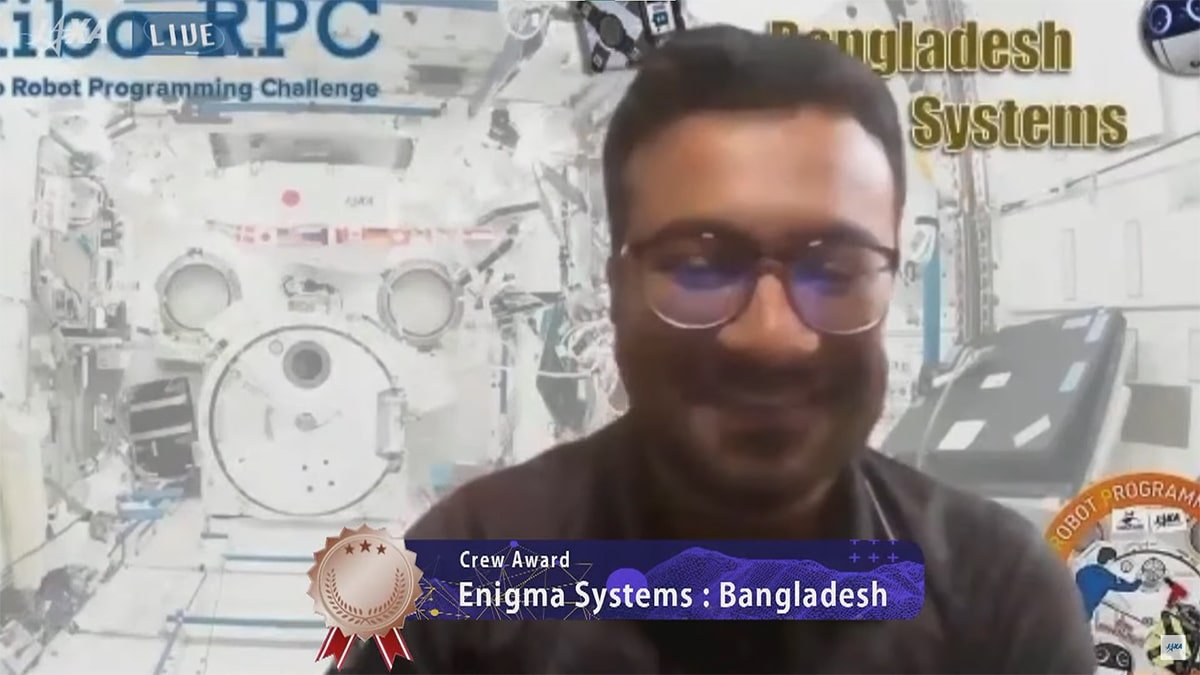
Awards: Results announcement
Following the announcement of the Crew Award by Astronaut WAKATA, the results of Final Round were revealed. First place was awarded to the Taiwanese team "KIBO la na tsu bu KIBO and Robology Awesome Aliens", a joint Taiwanese-Tunisian team. (Figure 6) Second place went to the joint Indonesian-Tunisian team "Bondowoso 3/Prime" (Figure 7), representing Indonesia, and third place went to the Japanese team "Space Lark". (Figure 8) (Table 2) The celebration for each winning team surely resounded throughout; joyous shouts echoed in acknowledgement of all teams' hard work!
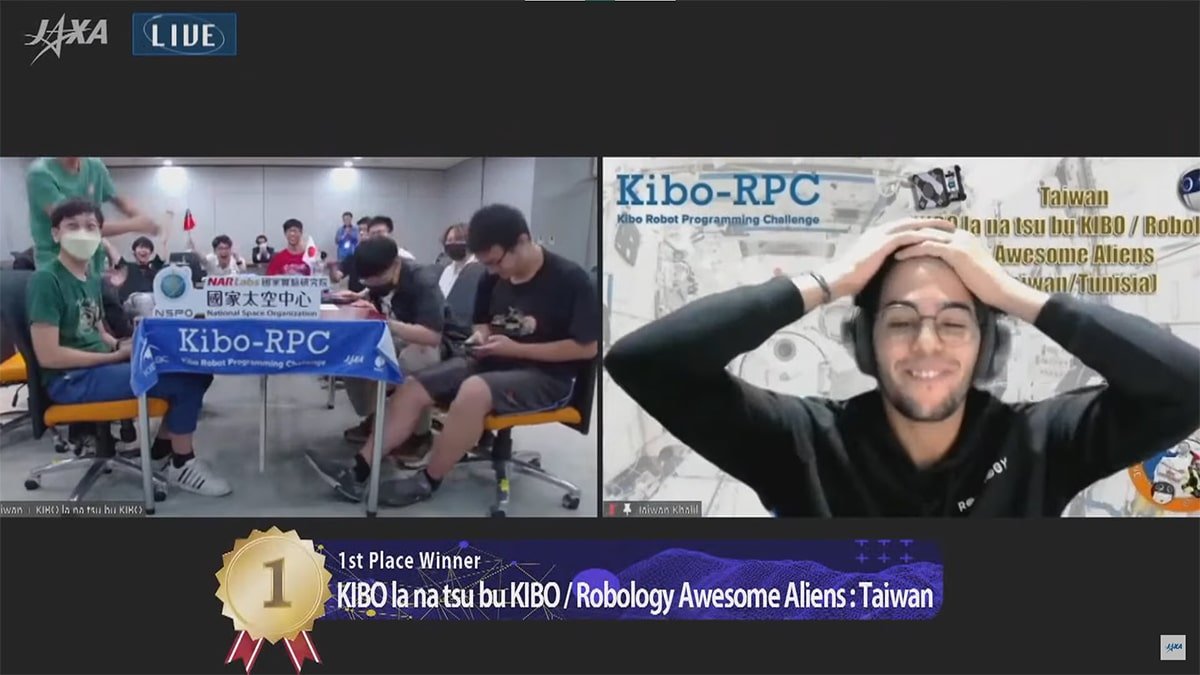
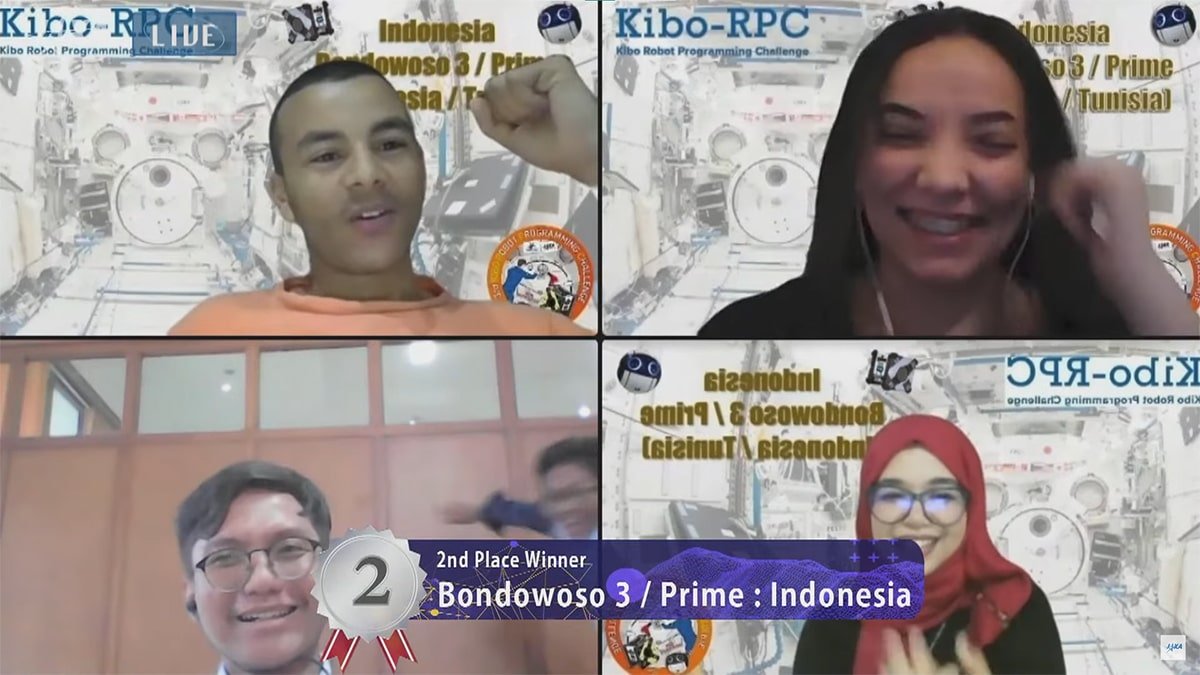

In this year's competition, the WWT teams set a standard of international cooperation as they took first and second place. This was emphasized by Astronaut WAKATA in his Crew Award speech, where he reminded students that working together across national borders can create limitless opportunities for space exploration - an invaluable lesson to carry into their futures.
Appreciation and Advisory Notice
The 3rd Kibo-RPC had a record number of 351 teams and 1,431 students from 12 countries/regions (Australia, Bangladesh, Indonesia, Japan, Malaysia, Nepal, New Zealand, Singapore, Taiwan, Thailand, Vietnam, and the U.S.) and the countries/regions that applied for the WWT.
We extend our sincerest thanks to the students who made this event possible. In addition, a big thank you goes out to all of the space agencies ∕ research institutes for their collaboration in organizing it. The 4th Kibo-RPC is on its way, so stay tuned for another opportunity around the globe soon!
Table 2: Results of Final Round
Scroll to the side to read more.
| Rank | Country/Region | Team Name | Target1 irradiation |
Target1 additional point |
Target2 Accuracy(mm) |
Achievement of Goal | Clearing time (sec) |
| 1 | Taiwan | KIBO la na tsu bu KIBO / Robology Awesome Aliens | ○ | ○ | 30.2 | ○ | 280.9 |
| 2 | Indonesia | Bondowoso 3 / Prime | ○ | × | 29.8 | ○ | 182.3 |
| 3 | Japan | Space Lark | ○ | ○ | 39.5 | ○ | 246.9 |
| 4 | United States of America | CP-HSTAR | ○ | × | 40.4 | ○ | 178.3 |
| 5 | Vietnam | BDMT | ○ | ○ | out of range | ○ | 221.7 |
| 6 | WWT | Bondowoso 2 / Pinnacle | ○ | × | 53.4 | ○ | 179.2 |
| 7 | Bangladesh | Enigma Systems | ○ | × | out of range | ○ | 200.9 |
| 8 | Australia | Dream Rover | ○ | × | out of range | ○ | 266.5 |
| 9 | Thailand | solarSystem[3] | × | × | out of range | ○ | 247.1 |
| 10 | Malaysia | IIUM ROBOTEAM AEROS-02 | ○ | × | out of range | × | 266.5 |
Table 3: Program of Final Round event
| No | Contents |
| 1 | Opening video |
| 2 | Introduction of the moderator and commentators, and the Final Round |
| 3 | Video message from Ames Research Center |
| 4 | Rules Explanation |
| 5 | Opening Remarks by Astronaut WAKATA |
| 6 | Finals (Run Video and Team Introduction) |
| 7 | Awards Ceremony |
| 8 | Interview with the winning team |
| 9 | Reviews and commentaries |
Unless specified otherwise, rights to all images belong to ©JAXA




